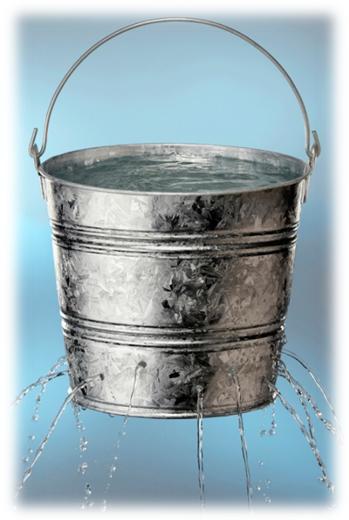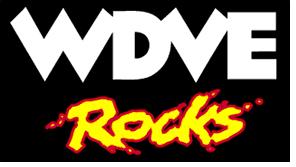 When you’ve been doing anything for a long time, it often becomes a challenge to question some of the basic underpinnings of your profession. That is especially true in radio where the fundamentals of consumer appeal and preference have been rocked by the Internet and disruptive technologies and platforms.
When you’ve been doing anything for a long time, it often becomes a challenge to question some of the basic underpinnings of your profession. That is especially true in radio where the fundamentals of consumer appeal and preference have been rocked by the Internet and disruptive technologies and platforms.
In radio, we were all taught from the same textbooks – the rules of radio handed down by Bill Drake, Rick Sklar, and others. In Rock Radio, many learned their craft from the Lee Abrams playbook.
At the heart, it seemed like there were three fundamental steps:
- Play the hits
- Be consistent
- Repeat steps 1 & 2
Other “truths” included:
“When they start complaining about repetition, it’s the time to keep that song you’ve been playing in power rotation.”
“They are creatures of habit so play the same benchmark bits at the same time each day.”
“Run your commercials here and here, even if everyone else is doing the same thing at the same time.”
And in recent years, the advent of PPM hasn’t really altered that core thinking. In fact, if anything, it has re-energized it and strengthened it. Much of the original philosophy that evolved in the early months of the meter lives on today, encouraging programmers to think of their stations as leaky buckets. To retain meters and to keep them from “migrating,” the key is to make few mistakes, keep it brief, and shore up inconsistencies and self-indulgent moments. The phrase – “in a PPM world” – has become synonymous with playing it safe.
Of course, all of these tactics – and that’s what they are – should not be confused with strategies. They are designed to impact other key radio competitors in the market in order to maintain or achieve local dominance. And in that endeavor, it’s often a battle for traditional radio dollars.
Yet, as BIA/Kelsey reports in their newest study, radio spot revenue increased less than 2% last year, and much of that growth is being attributed to election dollars generated during the most expensive Presidential race in history.
On the digital side of the spectrum, however, they report a rosier picture. Moving forward, while BIA/Kelsey is projecting 2-3% increases in traditional radio revenue, digital is expected to grow by nearly 11%.
So where is the competitive battle moving, and how does this impact sales…and programming?
I’m suggesting that broadcast radio do some serious soul searching about consumer tastes, and how they have drastically changed in this age of disruption. When consumers in many markets might have struggled to fill up 12 FM presets a decade ago, the abundance of infotainment options and the speed at which they are bombarding consumers is breathtaking – and they say a lot about how the competitive landscape has changed in a relatively short time.
Consumers are into technology and what’s new. Conversations start with “Did you hear?” or “Have you seen?” Gone are the days when you had to sit around until 11p.m. to see what happened today, much less wait for that pile of paper to be delivered to your doorstep the next morning. Now we all know what’s going on, all day long.
Radio has enjoyed an advantage, even in this age of abundance. It is simple, handy, dependable, and ubiquitous. But at what point does rock-solid, habit-forming consistency turn into same-old, nothing new, not much to talk about?
As Seth Godin reminded attendees at the Borrell conference last month, being remarkable means that consumers will remark about you and your brand.
What’s remarkable about broadcast radio on typical days where there aren’t weather disasters or big breaking news stories – that is, the other 350 days a year?
While writing this blog, I happened upon an interview with Phil Hendrie, a man of many voices and incarnations. Here’s how he explained it to All Access: “You’ve got to evolve whatever you’re doing – especially if it’s an entertainment product. You really can’t keep the show the same and rely on it to continually deliver. You always have to evolve your craft – at least in my world, you do.”
And that means shaking it up, trying different things, introducing new cast members, features, concepts, and ideas. If the audience enjoys your station or your morning show, they will hang in with you while you try out a beta bit, a new person on the show, or add a new wrinkle into their lives. It’s what typifies Mark Zuckerberg’s “Hacker’s Way.” We simply expect to receive updates to fix our mobile apps because very little comes out of the box in perfect shape. Art, content, entertainment, and information evolve.
With the instant digital voting mechanisms that we now have in place – on our websites, Facebook, Twitter, texting, and other resources – we learn very quickly about whether we have a hit or a miss. But to not try, to not strive, and to be fearful of changing it up is now a recipe for being ignored.
This becomes even more true in an environment where there simply is very little marketing – above and beyond what we have time to promote on our own air. Back in the day, staid, bland stations could sustain themselves and achieve great success by running lots of media – Filmhouse spots, spectacular billboards, direct mail, and more – and by remaining staunchly consistent.
But today, when consumers hear radio stations doing the same promotions, benchmarks, contests, and giveaways they’ve done for 10, 20, or more years, doesn’t it send out a message that things really aren’t changing on the FM band? That radio isn’t keeping up? That if you miss a day or even a week, you haven’t really missed all that much?
It shouldn’t be lost on any of us that the ratings company that warns us about slop and excess also reminds us that the biggest winners each and every year are often the stations that are rich in personality, connected to their communities, and risk-takers?
How is that stations like 98Rock (Sacramento), WDVE, 99Jamz (Miami), WHJY (Providence), and so many other vibrant brands are the ones that often make Arbitron’s top-performer charts? These stations frequently don’t follow “the rules” but they always find a way to combine the fundamentals with a keen sense of entertainment, personality, the local ethos, and good old remarkability.
 Not every station can be a DVE, and not all companies have the resources to provide their brands with substantial budgets for personality, promotion, and staff support. But you can’t argue with the results. And you have to be confident that DVE and stations like it will have a bright future, even when more than half the population is driving around in “connected cars,” able to access radio stations from around the world.
Not every station can be a DVE, and not all companies have the resources to provide their brands with substantial budgets for personality, promotion, and staff support. But you can’t argue with the results. And you have to be confident that DVE and stations like it will have a bright future, even when more than half the population is driving around in “connected cars,” able to access radio stations from around the world.
You can also bet that the pros that program these radio starships aren’t sweating over a leaky bucket. They are obsessing about what they can do right-now-today to keep their stations fresh, essential, top-of-mind, entertaining, and compelling. And so should you.
Radio companies would do well to rethink their assumptions in a changing environment where consumers aren’t excited about the same old thing. They are looking to be flat out entertained and enchanted. They want you to kick their ass, amaze them, surprise them, and wow them. Doing the same mechanical things day in and day out isn’t in sync with their needs. The boredom of staunch, undying consistency is the worst thing you can aspire to in this rapid-fired environment.
Smart programmers know they need to play the PPM game on the one hand, but work relentlessly at being sharp, engaged, fresh, real-time, and current on the other. It’s a balance, and it’s never been more difficult to be competitive in both environments where day to day ratings are critical, just is the need to stand out in a changing world of rampant choice.
Leaky bucket? Or kicking the bucket?
Radio still has a choice.
- Media And Technology In 2025: Believe It Or Not! - April 18, 2025
- In Radio, You Just Never Know - April 17, 2025
- The Secret To Making A Great Podcast (And Great Radio) - April 16, 2025




In other words…
Don’t be afraid to do your job and touch the station everyday.
Marty, you’ve said it in 140 characters or less…and said it well. Thank you.
We are having the same issue here in Ottawa. Team1200, the sports station, is stagnant with the drive home show is awful, populated with incompetents that make jokes instead of taking sports and topical info. We have to switch to TSN Montreal or Toronto to get actual sports talk. With all the blogs (yours is a great example), I find myself tuning into radio less and less for information and more and more for a quick music hit or whatnot.
Last example?
Local All News CFRA580, only people that call in are senior citizens. Now the station is conservative in viewpoint, but young people call in with informed and different takes and are run off the air by the staid hosts.
Why listen if your opnion won’t be heard?
Thanks, Paul, hope it gets better for you.